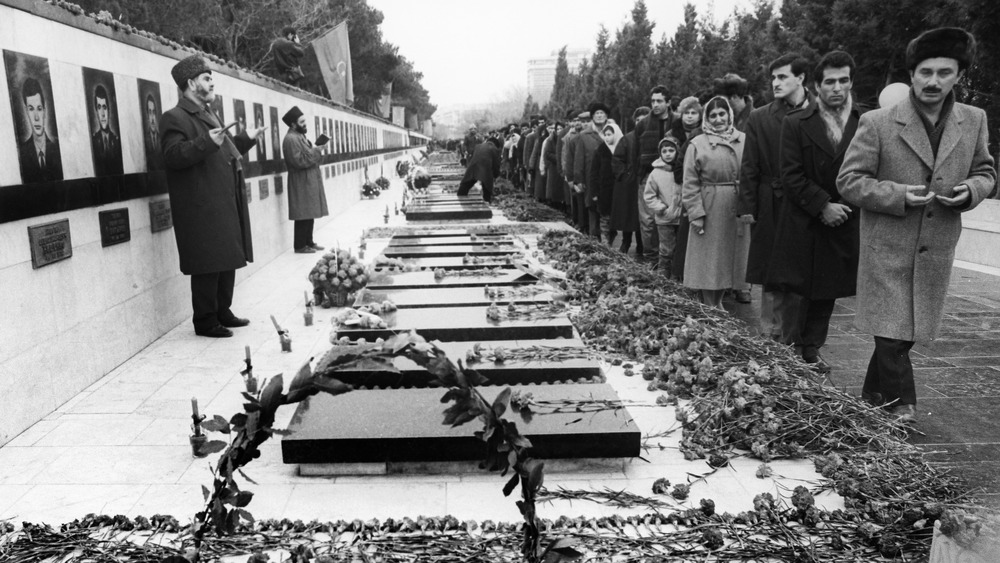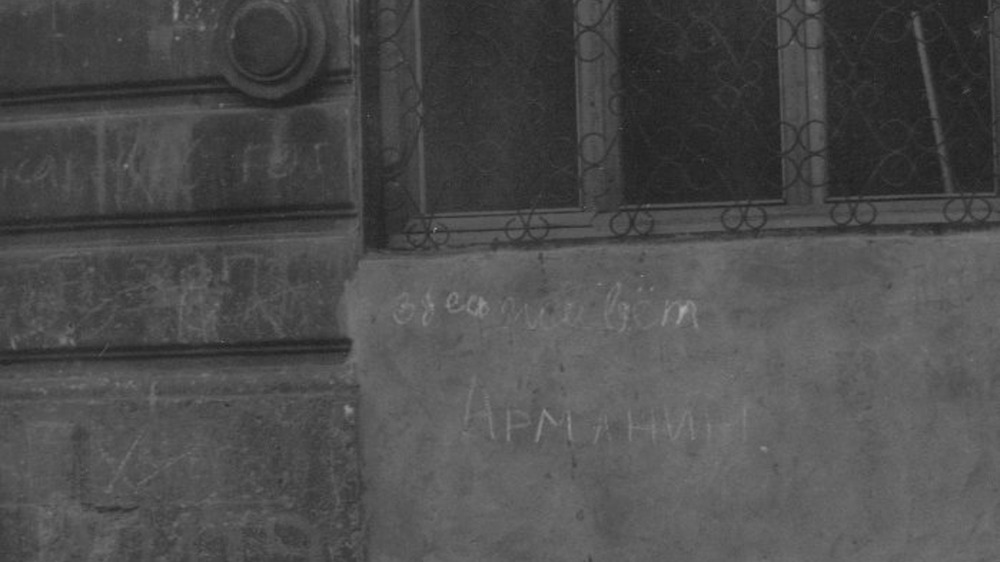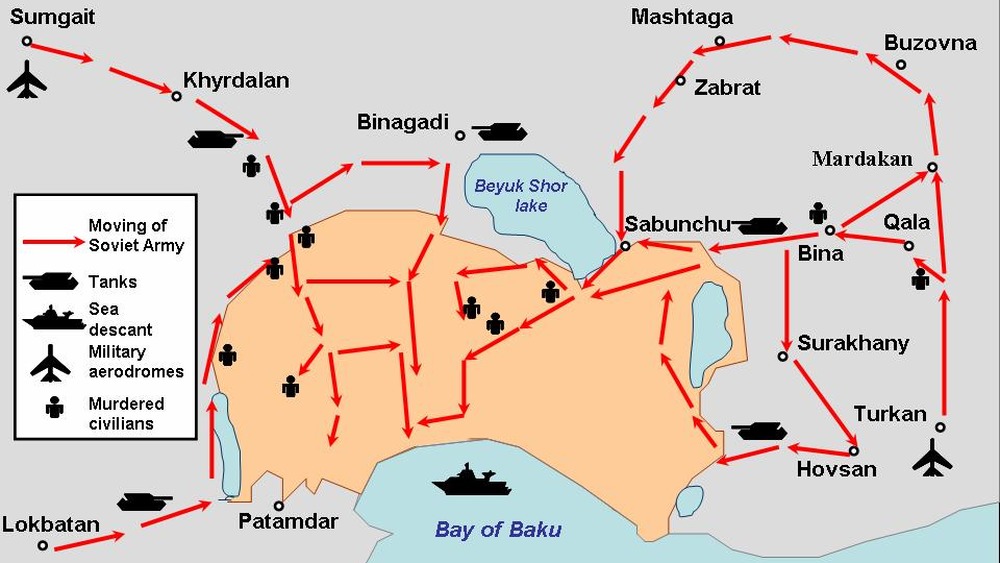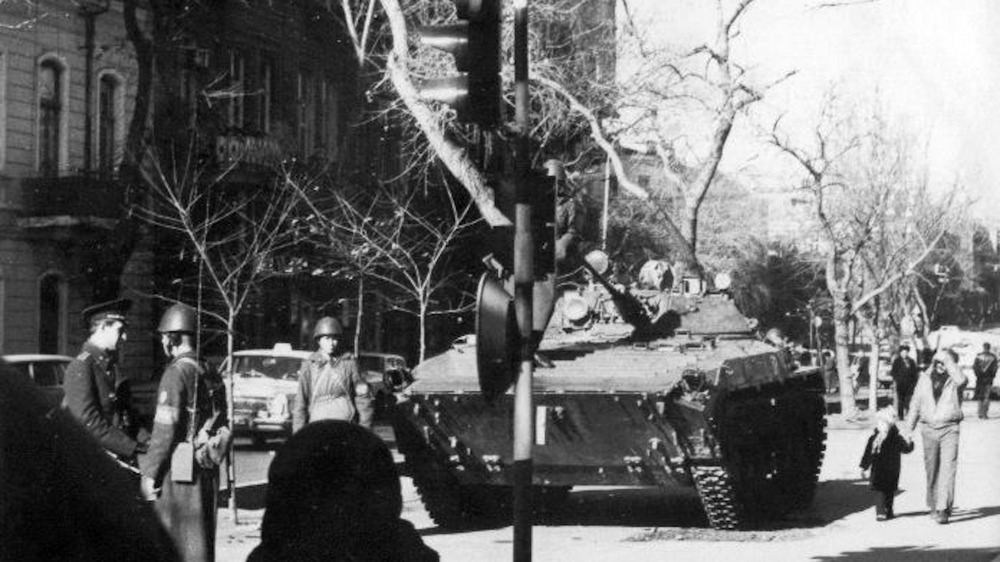The Tragic History Of Black January
January 1990 was a dark month for the Soviet Caucasus. During the previous two years, the First Nagorno-Karabakh War had begun, and the region was rocked by anti-Armenian pogroms. Ethnic tensions continued to escalate between Azerbaijanis and Armenians simultaneously as a pro-independence movement gained momentum in Azerbaijan. In early 1990, under the guise of stopping an ethnic cleansing, Soviet troops occupied Baku and violently suppressed the independence movement.
The violent suppression by the Soviet army only galvanized the Azerbaijani independence movement, and by the end of 1991, Azerbaijan achieved independence. But the events of January 20 became known as Qara Yanvar, or Black January. The day is also remembered as "the day of martyrs."
Unfortunately, due to the continuing ethnic tensions between Armenians and Azerbaijanis, the narrative of January 1990 is often either limited to the pogroms or the Soviet occupation. But the two incidents are inextricably linked to one another, as are the fates of those in the region. This is the tragic history of Black January.
The seven day pogrom in Baku
On January 13, 1990, an anti-Armenian pogrom started in Baku, Azerbaijan. At the time, there were roughly 250,000 Armenians living in Baku, and within a week, almost all of them were expelled out of Azerbaijan, per Diaspora.
According to Human Rights Watch, there are conflicting reports about how the pogroms started. While some claim that Popular Front leaders were disavowing the calls to expel Armenians from Baku, others say that there were speeches calling for violence and expulsion during the mass rally that preceded the pogroms.
However, author Jesse Paul Lehrke notes that the Baku pogroms "had all the indications of being premeditated," due to the fact that people had lists of Armenian names and addresses, and the pogroms started in both the suburbs and the city simultaneously.
Over the course of a week, countless Armenians were injured and tortured. No one knows exactly how many lost their lives, but estimates range from 90 to 300.
Neither the Soviet soldiers who were there nor the local militiamen did anything. Even though there were at least 12,000 Soviet MVD troops, they "did nothing more than protect Communist Party and government buildings." It's worth noting that one year later, Soviet troops worked with Azerbaijani forces to empty over 20 Armenian villages during "Operation Ring."
A state of emergency
On January 15, Mikhail Gorbachev, president of the Soviet Union, declared a state of emergency in Azerbaijan. However, the state of emergency was declared only in Nakhichevan and the Nagorno-Karabakh Autonomous Oblast. "Inexplicably, Baku was not mentioned," Human Rights Watch writes.
By January 16, the pogroms started to wind down and the Popular Front started to create blockades with trucks and buses in the event of Soviet military intervention. According to eurasianet, some who survived were "given temporary refuge by Azeris."
The pogroms had also been accompanied by an independence movement, and it was clear that Soviet leaders feared being overthrown, per IBTimes. This pro-independence movement in Azerbaijan was also partially in response to the recent statement by the Soviet Armenian government that demanded Armenia's reunification with the Nagorno-Karabakh Autonomous Oblast, GPIL writes.
On January 19, Iusif Samedoglu, a leader of the Popular Front party, was planning on making a televised announcement asking the rioters to disperse. But then, at seven in the evening, there was an explosion at the television center and all communication broadcasts were shut down.
There are a number of theories as to what caused the explosion. Some blamed it on Azerbaijani extremists while others blamed it on the central government. However, most of the evidence suggests that either the KGB or the military were responsible for the explosion.
The Soviets come down violently
Since radio and television communications were down, there was no way to inform people that Soviet troops were headed to Baku. And on January 19, Moscow had finally declared a state of emergency in Baku and sent Soviet tanks and troops to the city, per Radio Free Europe.
But, as Human Rights Watch notes, the state of emergency was officially announced after troops moved in, and since communications were down, it was essentially a surprise attack. There was no reason to do this "if the purpose of the Soviet troop action was to protect Armenians and other non-Azerbaidzhanis and otherwise restore order."
Instead, Soviet troops only seemed concerned with violently suppressing the quickening independence movement. By the morning of January 20, Soviet tanks and troops had entered the city and were attacking unarmed people. There are multiple reports that Soviet troops fired on civilian buses and clearly marked ambulances. In at least one documented incident, they intentionally tried to crush unarmed civilians under their tanks. Soldiers also fired into residential buildings, claiming that they were firing back at snipers, but "no such sniper was ever killed or captured."
Euromaidan Press reports that at least 25,000 Soviet troops occupied Baku, and the indiscriminate violence resulted in the loss of between 100 and 300 lives. Later, many saw the events of Black January as a precursor to the January Events in Lithuania in 1991, when the Soviet army similarly came down violently on Lithuanian independence.



